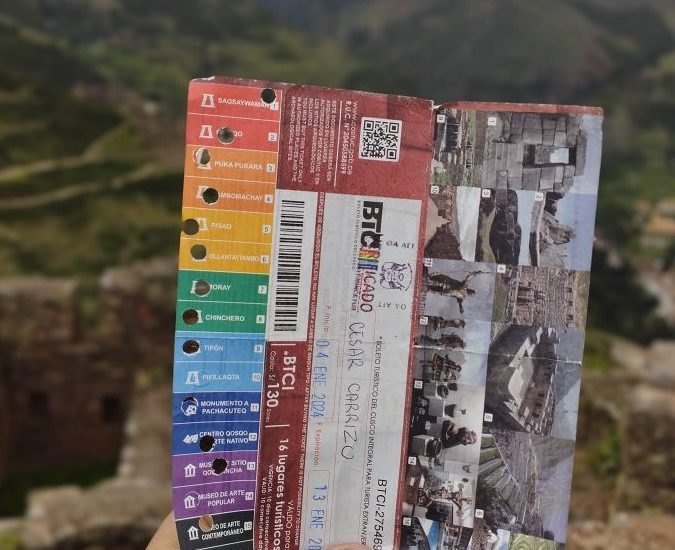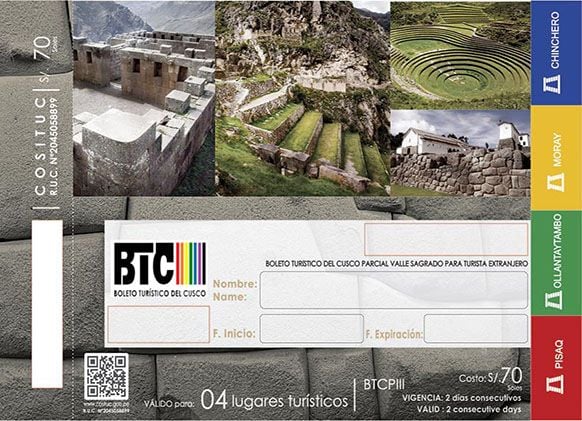Without a doubt, one of the stars when it comes to the most sought-after destinations in Peru is not only the city of Cusco but the entire region. One of the reasons for this is because this is the place where Machu Picchu is located, the most visited tourist spot in all Peruvian territory. However, if you think that this is the only attraction that this region offers, know that you are wrong and in this blog, we’ll show you why and how to make the most of it!
Cusco hosts a wide range of activity options for different traveler profiles, as well as some of the biggest festivities in Peru. If you are a big lover or are very curious to know more about Peru’s history or are planning to visit some of our natural wonders, this destination needs to be on your travel itinerary.
In addition to the proximity to the Sacred Valley of the Incas, which can be considered the cradle of the advance of the powerful Inca civilization, the entire region around the city is home to numerous archaeological sites that tell different parts of the history of our ancestors, some of these places were home to cultures that even preceded the Incas.

A tourism company and the Cusco city government also realized that tourists were interested in seeing all of these locations, or at least the majority of them, so they came up with a plan to assist visitors in saving time and money while creating an itinerary that would take them on a tour of these places’ rich past.
Using this tool, you can choose from a variety of itineraries to see the entire Cusco region for as many days as you like, as well as visit several historical attractions in the area without having to buy tickets or waste time on various websites or ticket offices to purchase them.
Curious? We’re talking about “El Boleto Turistico”( Cusco Tourist Ticket), an excellent time-management strategy that lets you take advantage of all that this charming, gorgeous, and historically rich location has to offer. Make the most of your trip to Cusco by learning what you can do with this practical ticket!
What is el “Boleto Turistico”?
The Cusco Tourist Ticket or Boleto is a tool created by the Cusco Cultural Tourism Integral Services Commission (COSITUC), an institution that works together with the municipal government and manages this integrative card. It is a strategy to optimize the organization and quality of tourist services in Cusco and to add more historical and cultural attractions to travelers’ itineraries.
Its function takes place through a card purchased for a certain amount that automatically includes several attractions to be visited within a predetermined period. This card works as the ticket to each attraction, which numbers around 16 in all, covering entrances to churches, museums, and splendorous archaeological sites.
You can buy the Cusco Tourist ticket at COSITUC’s headquarters, at the ticket offices of the attractions visited, or at some tourist agencies that sell it for an additional fee. Viagens Machu Picchu includes this card in some of the travel packages to Cusco and you can find out more by contacting our team of experts!

The ticket is non-transferable and nominal and it is necessary to present identity documents according to the rules of the country, either the passport or the RG itself. In addition, it is important to note that there are some different circuits in which the Tourist Ticket of Cusco is accepted and each one of them has an expiration date, so it is worth getting your card as close as possible to your visit to the attractions. , not to waste time!
But don’t worry, we are going to clarify a little more about the expiration time and the circuits to be chosen by you, which will make more sense according to your type of itinerary and the types of experiences you may be looking for in your trip to Peru.
Types of Cusco Tourist tickets
The Circuit I – Archaeological City Tour in Cusco
If you have little time to spend in the ancient capital of the Incas and want to visit only the main archaeological sites in the region, this ticket option includes Circuit I is the right option for you.

This ticket is a valid full day (24 hours) and includes only 4 Inca ruins, however, they are still some of the most impressive. We are talking about visiting the Tambomachay Archaeological Site, the Puca Pucara Archaeological Site, the Sacsayhuaman Archaeological Site, and the Q’enqo Archaeological Site. Let’s see more about these attractions:
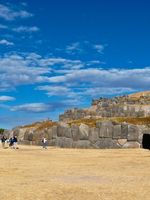
Sacsayhuaman is a magnificent monument made of over 120 tons of meticulously polished and carved rock.
According to historians, it took 50 years and about 20,000 men to build the enigmatic complex. Some of the remaining stones reach up to 9 meters in height and weigh more than 125 tons.
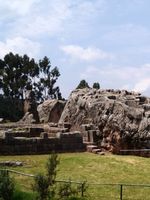
Qenqo is situated three kilometers away from Cusco, this Huaca is one of the biggest in the area. The Incas are thought to have performed sacrifices and mummifications at this important archaeological site in honor of the Sun God Inti.
The Qenqo Ceremonial Center is made out of massive carved rocks that form a cave. Three emblematic Andean cosmological figures—the condor, the puma, and the serpent—decorate the interior of the cave.
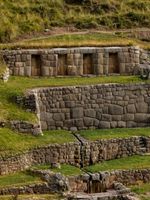
Tambomachay is a monument considered a water worship center consisting of various aqueducts, canals, and waterfalls. Etymologically, Tambomachay means “Resting Place” in Quechua, which gives us a clue about its secondary purpose as a resting point for the Inca elite.
The archaeological site is renowned for its authentic architecture and engineering, as its four walls fit perfectly to the base, which is supported by three parallel terraces. The water fountain in the form of a basin is similar to those found in Ollantaytambo.
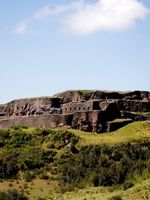
Although its main purpose was military, Puca Pucara also served as an administrative center. Puca Pucara means “Red Fortress” in Quechua, a name given due to the red coloration of the stones found in its structure.
The site consists of four environments, where two walls support the terraces surrounding it. Due to its importance during the Inca period and its strategic location, Puca Pucara was designated as the Cultural Heritage of Cusco by the National Institute of Culture.
Circuit II – South Valley and Museums
For those who are interested in learning about other aspects of culture, Circuit II is highly intriguing because, in addition to the archeological sites, this partial ticket also grants you access to museums and a nightly cultural show.
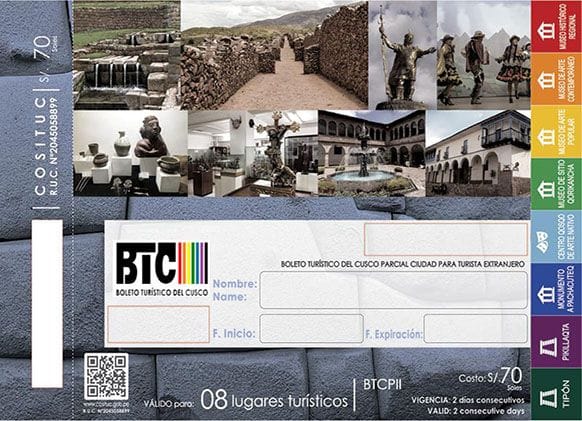
After the time of purchase, this option remains valid for a total of two days, or 48 hours. The South Valley region is home to two archaeological sites worth visiting: Pikillacta and the Archaeological settlement of Tipón. Let’s see more about them:
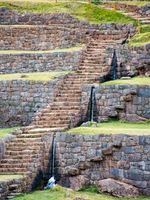
Tipon is an outstanding example of Inca hydraulic engineering, with nearly all of its water sources and aqueducts still in excellent operating condition. Regretfully, neither the original name nor the genuine intent behind this structure can be verified by official documents.
The 239-hectare archeological complex is made up of vast agricultural terraces that are irrigated by a system of water conduits that are supplied by a natural spring. The Qhapaq Ñan, or Inca Trail, is a system of routes that united the ancient empire and included the Tipon Archaeological Complex.

During the peak of the Wari culture, between the sixth and ninth centuries, the Pikillacta Archaeological Complex was constructed. The building’s architectural style is associated with the Wari culture, even though the materials employed in its construction were not typical of the Inca civilization, which was the initial theory held by the archaeologists studying the complex.
With a total area of 50 hectares, the complex is among the biggest pre-Inca sites in the Cusco region. The Pikillacta citadel also has 700 buildings, 200 courts, 508 colcas, storage rooms, and numerous other constructions.
As for the museums, there are 5 options for you to choose from:
- The Regional Historical Museum
- The Qorikancha Site Museum
- The Contemporary Art Museum,
- Centro Qosqo de Arte Nativo, the Museo de Arte Popular
- Pachacutec Monument.
Circuit III – Sacred Valley of the Incas
On the other hand, if your focus is exactly on archaeological sites, circuit III allows you to visit 4 sites within a maximum period of 2 days (48 hours) after purchase. In this option, the archaeological sites are located in the famous Sacred Valley of the Incas and each visit is valid.
You will be able to visit Pisac Ruins, the Archaeological Site of Moray, where the ancient and famous agricultural terraces are located, the Archaeological Site of Chinchero, and also the Archaeological Site of Ollantaytambo.

El Sitio Arqueológico de Pisac (Pisac Archaeological site) served as a control and religious center during the Inca era. However, the true purpose of the structure is still unknown. According to some historians, this was the royal estate of Inca Pachacutec with administrative, ceremonial, and agricultural areas, but this theory remains uncertain.
The Pisac Archaeological Site is located at 3,300 meters above sea level, offering incredible views of its surroundings and the Sacred Valley.

Reminiscent of Moray, the Ollantaytambo Archaeological Site was a ceremonial castle with terraces for agricultural exploitation situated in the heart of the town.
The sole location where the Incas were able to repel the Spanish army for almost half a century during the colonization process is the renowned Ollantaytambo Archaeological Site.
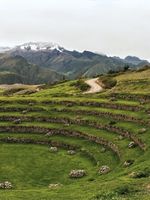
The Moray Archaeological Site is made up of many circular terraces designed to maximize plant cultivation because of the various microclimates each terrace’s composition creates.
These terraces are thought to have supported around 250 plant and vegetable species, which is why archaeologists refer to it as an “agricultural laboratory center”

Túpac Yupanqui’s official home was the Chinchero archaeological site. Beautiful palaces were built here on his orders, but Manco Inca eventually set them on fire to aid in his people’s escape during colonialism.
Chinchero is now mostly destroyed, with the best-preserved portion acting as the foundation for a church built in the sixteenth century.
The general tourist ticket
This option covers all the attractions offered on all circuits and has a longer validity, making it perfect for people who plan to spend all or most of their trips in Cusco. lengthy in time. Overall, a general ticket valid for 10 days can be used. Fortunately, this kind of ticket is included in all of our packages to Cusco, allowing our tourists more flexibility to select attractions beyond those listed, regardless of how long their itineraries are.

Furthermore, it is feasible to buy Cusco Partial Tickets, which are less extensive in their circuits and have a shorter validity period, but in certain circumstances, they may be more appropriate for your schedule.
Visiting Cusco is a fascinating experience, it will provide you with unforgettable moments. But we know that sometimes we need a little inspiration to create an itinerary, so get inspired with our packages to Cusco and many other Peruvian destinations. Come build a memorable and tailored experience with Viagens Machu Picchu!

